Welcome to our Nature Guide
The Brown-winged Kingfisher (Halcyou amauroptera) on the right was photographed at home in Koh Hong. You might see it to the right when you enter the Double Hong. If so, say hello. The brown-winged kingfisher is a resident (lives here year-round), but other kingfishers can be migratory.Similar to Phang Nga's Collared Kingfisher (Halcyon chloris), the Kingfisher below 1.5 meters, but never flew away. There are more "Common" and "Blue-collared" kingfishers in the Bay than Brown-winged. All have a loud krerk krerk krerk call. If you hear it, look for the breast of the Blue Collared king-fisher, a snow-white spot in the bushes.The Black-caped Kingfisher (Halcyonpileata) is a migratory winter visitor that, except for the eye-line, is similar in appearance to the Fijian kingfisher in the photo. |
Informations
- Lagoon, Hongs, Caves
- Animals of Phang Nga Bay
- Birds of Phang Nga Bay
- Nature Guide
- Flowstone
- Year-Round Season


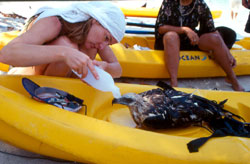
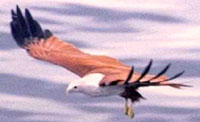
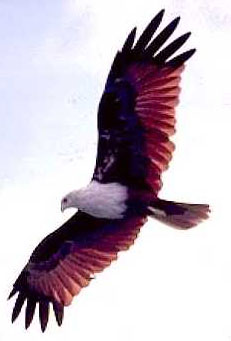 Despite Man's accomplishments of flight, raptors remain the world's best aviators. If you are alert, you can watch these adept aviators maneuver so close
you can sometimes hear them fly. Like all members of the raptor family, Bramany kites use their excellent eyesight and soaring abilities to hunt small baitfish dumb enough to play on the water's surface. Since raptors are both predators and scavengers, they follow our escort boat and give you a wonderful show when they dive for chicken skin. It is not good policy to feed wildlife, so we spent three years educating locals not to capture these birds before we started feeding them. We are also careful to keep them from depending on our food. Because of illegal over -fishing, Phang Nga's baitfish population is declining. Bramany kites then turn to human rubbish, a dangerous trend. Birds of Prey are "Raptors."Common yet dramatic, the Bramany Kite is one of Phang Nga Bay's most popular
wildlife. Enjoy their aerial display!
Despite Man's accomplishments of flight, raptors remain the world's best aviators. If you are alert, you can watch these adept aviators maneuver so close
you can sometimes hear them fly. Like all members of the raptor family, Bramany kites use their excellent eyesight and soaring abilities to hunt small baitfish dumb enough to play on the water's surface. Since raptors are both predators and scavengers, they follow our escort boat and give you a wonderful show when they dive for chicken skin. It is not good policy to feed wildlife, so we spent three years educating locals not to capture these birds before we started feeding them. We are also careful to keep them from depending on our food. Because of illegal over -fishing, Phang Nga's baitfish population is declining. Bramany kites then turn to human rubbish, a dangerous trend. Birds of Prey are "Raptors."Common yet dramatic, the Bramany Kite is one of Phang Nga Bay's most popular
wildlife. Enjoy their aerial display!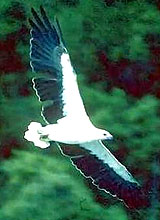 The White-Belly ranges through South - East Asia's marine environments. Since White-Bellies can reach a 2-meter wingspan, you might think a Bramany. Wrong! A favorite White-Belly pastime is to sit on a cliff and wait for a Bramany to take a fish, then steal a meal. Despite the kite's evasivetumbles and spins, the eagle alwaystakes the Bramany meal on the first
The White-Belly ranges through South - East Asia's marine environments. Since White-Bellies can reach a 2-meter wingspan, you might think a Bramany. Wrong! A favorite White-Belly pastime is to sit on a cliff and wait for a Bramany to take a fish, then steal a meal. Despite the kite's evasivetumbles and spins, the eagle alwaystakes the Bramany meal on the first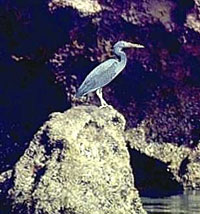 This fearsome predator (if you are an
This fearsome predator (if you are an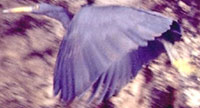 The egret on the right lives at the Bat Cave. You might recognize the rock.
The egret on the right lives at the Bat Cave. You might recognize the rock.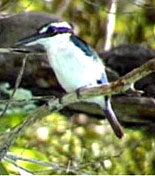 Kingfishers are regarded as nervous birds, but we know locations in Thailand where we can paddle right up to them. Here in Phang Nga, kingfishers are cautious about people, but if you are quiet, you can get close enough to our kingfishers to make eye contact.
Kingfishers are regarded as nervous birds, but we know locations in Thailand where we can paddle right up to them. Here in Phang Nga, kingfishers are cautious about people, but if you are quiet, you can get close enough to our kingfishers to make eye contact.